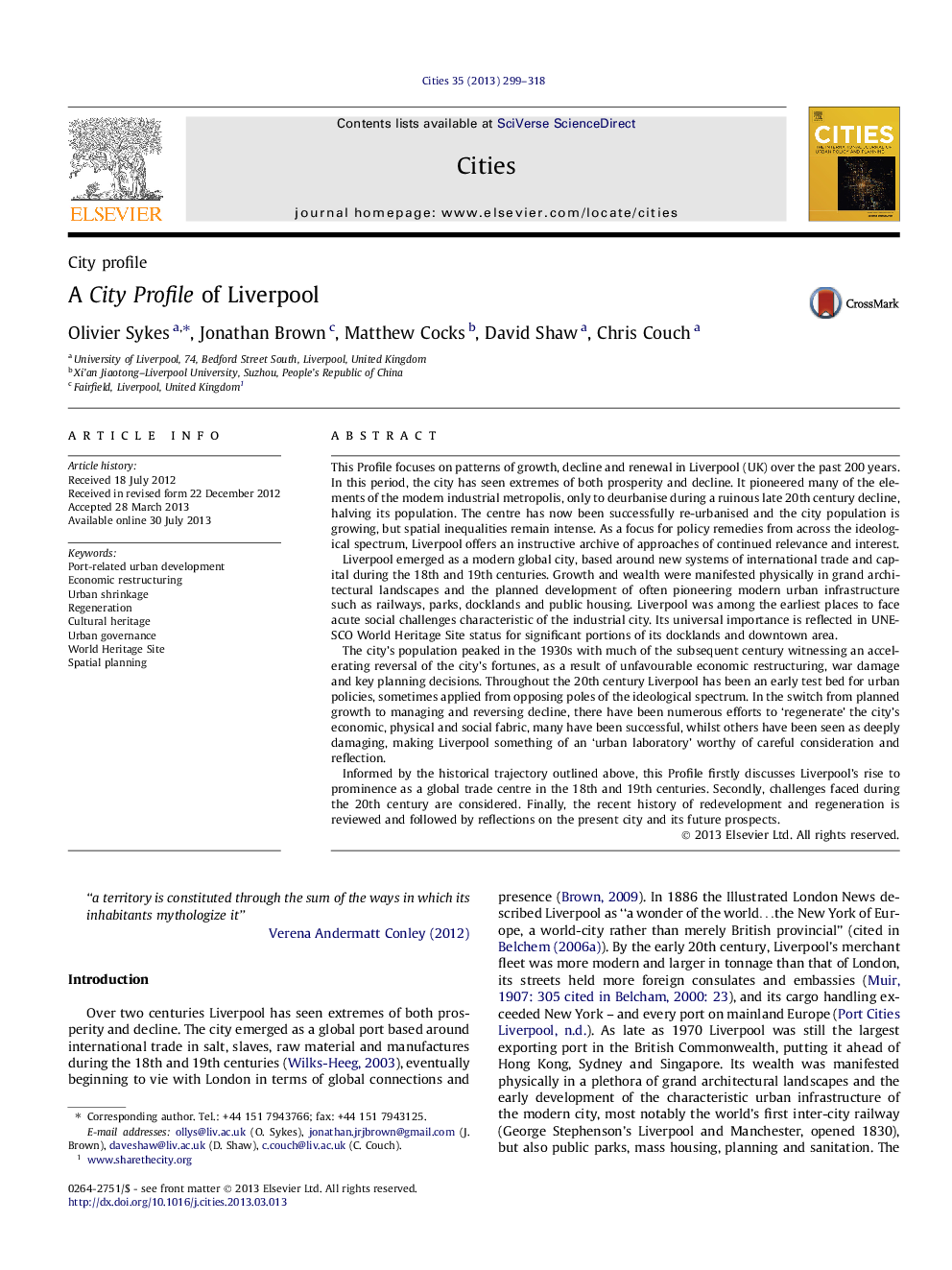| کد مقاله | کد نشریه | سال انتشار | مقاله انگلیسی | نسخه تمام متن |
|---|---|---|---|---|
| 1008462 | 1482359 | 2013 | 20 صفحه PDF | دانلود رایگان |

• Consideration of the growth and physical expansion of the city from the 18th century onwards.
• Discussion of the impacts of economic change in the 20th century on the fortunes of the city.
• Overview of Post-WW2 urban planning, 1960s cultural dynamism, and economic problems in the 1970s.
• Account of the city redevelopment process and key urban policy initiatives from the 1980s onwards.
• A concluding reflection on Liverpool’s ‘urban story’ in the period covered by the Profile.
This Profile focuses on patterns of growth, decline and renewal in Liverpool (UK) over the past 200 years. In this period, the city has seen extremes of both prosperity and decline. It pioneered many of the elements of the modern industrial metropolis, only to deurbanise during a ruinous late 20th century decline, halving its population. The centre has now been successfully re-urbanised and the city population is growing, but spatial inequalities remain intense. As a focus for policy remedies from across the ideological spectrum, Liverpool offers an instructive archive of approaches of continued relevance and interest.Liverpool emerged as a modern global city, based around new systems of international trade and capital during the 18th and 19th centuries. Growth and wealth were manifested physically in grand architectural landscapes and the planned development of often pioneering modern urban infrastructure such as railways, parks, docklands and public housing. Liverpool was among the earliest places to face acute social challenges characteristic of the industrial city. Its universal importance is reflected in UNESCO World Heritage Site status for significant portions of its docklands and downtown area.The city’s population peaked in the 1930s with much of the subsequent century witnessing an accelerating reversal of the city’s fortunes, as a result of unfavourable economic restructuring, war damage and key planning decisions. Throughout the 20th century Liverpool has been an early test bed for urban policies, sometimes applied from opposing poles of the ideological spectrum. In the switch from planned growth to managing and reversing decline, there have been numerous efforts to ‘regenerate’ the city’s economic, physical and social fabric, many have been successful, whilst others have been seen as deeply damaging, making Liverpool something of an ‘urban laboratory’ worthy of careful consideration and reflection.Informed by the historical trajectory outlined above, this Profile firstly discusses Liverpool’s rise to prominence as a global trade centre in the 18th and 19th centuries. Secondly, challenges faced during the 20th century are considered. Finally, the recent history of redevelopment and regeneration is reviewed and followed by reflections on the present city and its future prospects.
Journal: Cities - Volume 35, December 2013, Pages 299–318